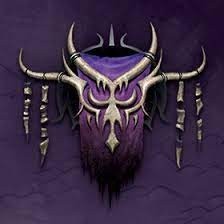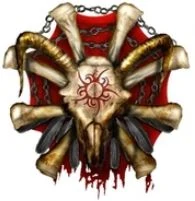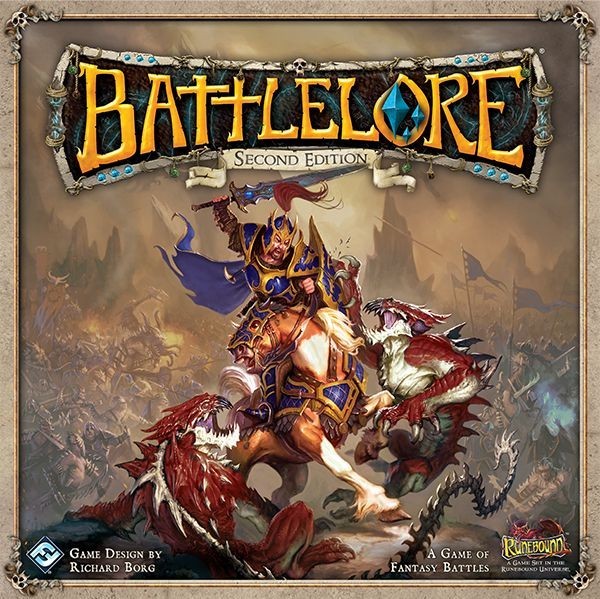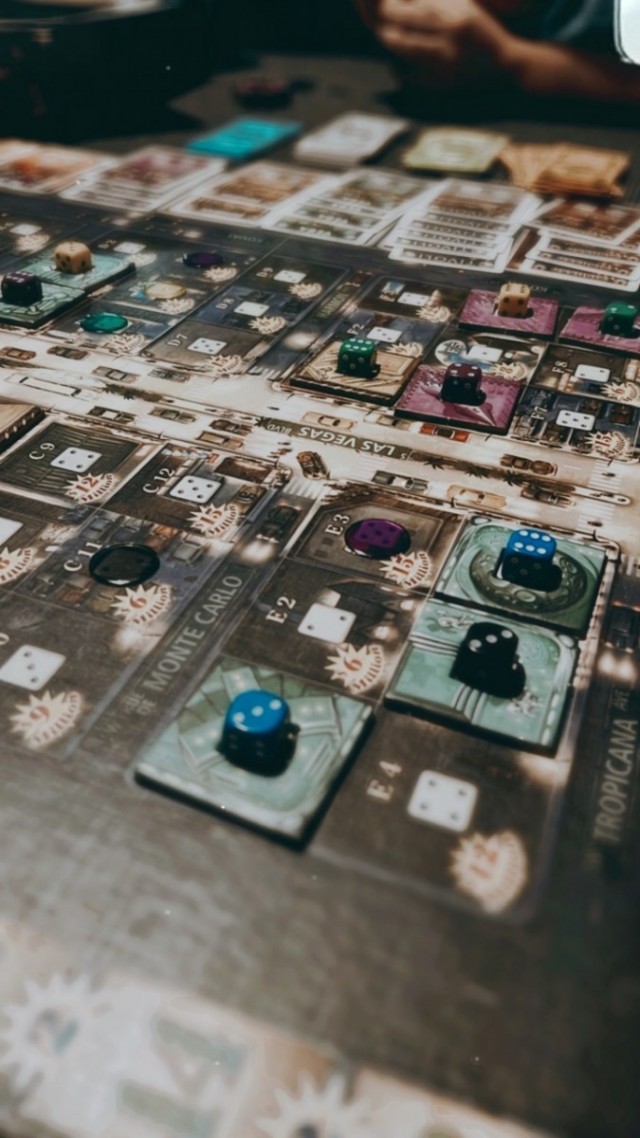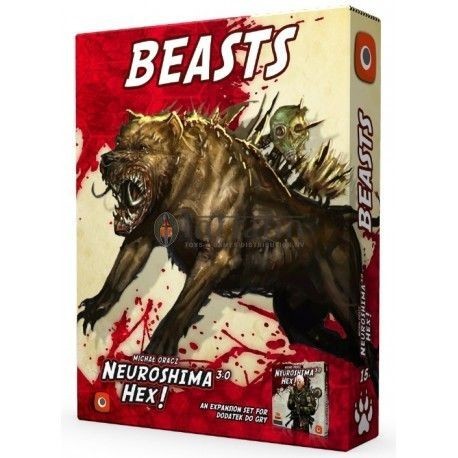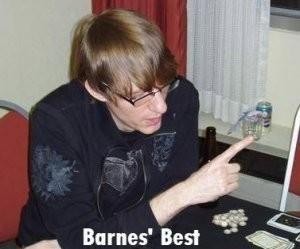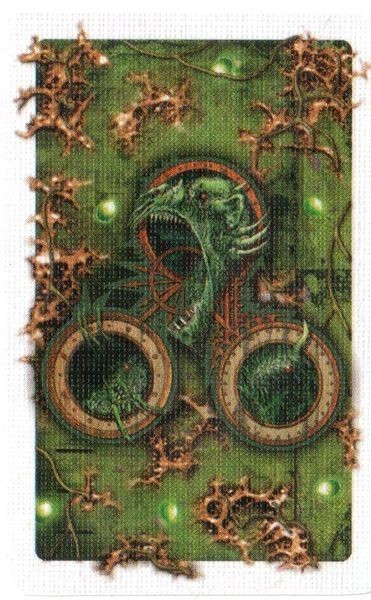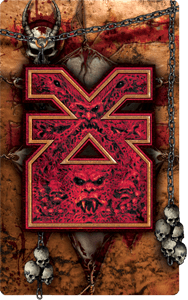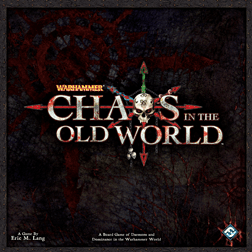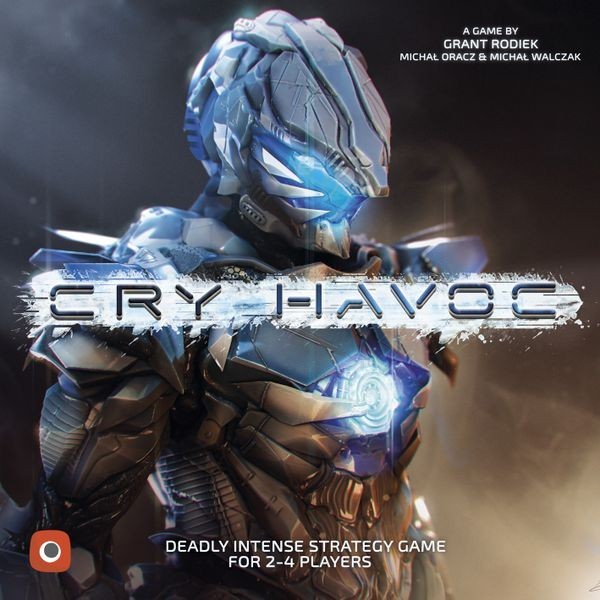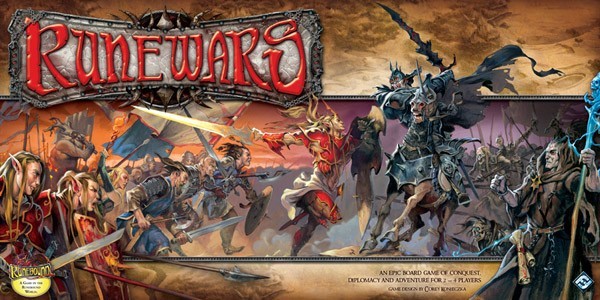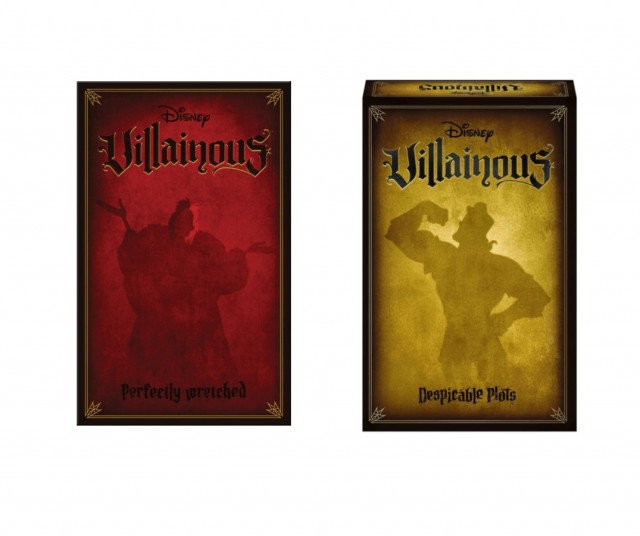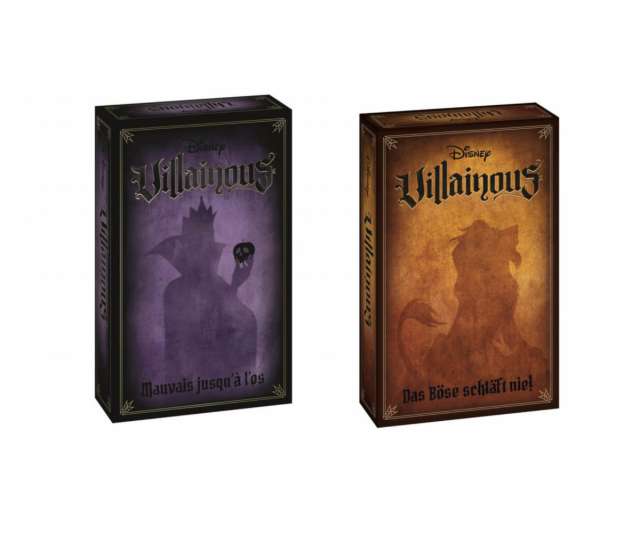Well, no, not THAT Adventure Time, but it's a co-op that carries the echoes.
One interesting trend that I've always enjoyed from game designers is maintaining some level of story consistency within their products. Video games have a much easier time of this, since their feedback and interaction with their audience in the modern era is nearly instantaneous. Similarly, RPG producers (and producers of RPG video games) are also enabled because of the very nature of their product: the idea of an RPG is to tell a story. Board games are a different animal, in that each game and, often, each session is usually distinct unto itself. This changed a bit with the introduction of legacy games, but it's still relatively rare for a company to produce a new game, with a new approach and new mechanics, that still shares the background of one of their prior releases. But that's exactly what Gamelyn did with Tiny Epic Defenders by returning to the world of Aughmoore, the setting for Tiny Epic Kingdoms, and vaguely continuing the story of a world riven by war and now faced with an external threat that makes everyone have to decide whether they want to ally with recent enemies or get annihilated by demons. Tough choice, but I'll go with the non-demon types, personally. Admittedly, this is not too dissimilar from the approach that one of said video game producers, Blizzard, took with their Warcraft/Azeroth setting, which is now legendary within the gaming world.
(Tangent: Does anyone else instantly get reminded of Lucy pulling the football from Charlie Brown's attempt to kick it when they read the word "Aughmoore"? Like: "AUGGGHHHH - moooorrre!") May just be a Gen X thing. /tangent)

So, the setting of TED is that, after the great war (Kingdoms), the various races of the world have to band together to stop a demonic invasion. That also means that TED is a co-op, which is not normally a sale for me. I noted last week that the co-op element was part of my reluctance to engage Tiny Epic Zombies and, subsequently, how wrong I was, especially given that game's other modes and, in truth, the co-op mode being as fun and drenched in theme as it was. Defenders has no other modes, so it's co-op or nothing, which... yeah. The only co-ops I've ever really enjoyed are Spirit Island, because I appreciate the novel approach to the setting and the puzzle factor is malleable enough to be interesting, and Arkham Horror, because Lovecraft. That said, even the latter isn't enough to convince me to pick up things like Cthulhu: Death May Die (completely aside from the inane title.) However, several plays of Defenders has kinda convinced me that there's enough depth in the base game plus the Dark War expansion that it arcs far closer to an actual RPG than to the typical clockwork puzzle of most co-ops. The main thing I want these kinds of games to do is tell me a story. Not a story of how you visited the magic shop in Arkham until you found an Elder Sign and then somehow killed the demon god with a shotgun but, y'know, an actually interesting story. TED gets close enough to that in a much smaller package.
The game is essentially one of resource and risk management. You have 3 actions per player turn (4 if you lose a location) and have to figure out how best to employ said resources to deal with increasing levels of risk around the board. The more risk, the better chance you lose locations which not only gets you closer to losing the game but also deprives you of the resources the board provides. As with most games of this type, you'll almost always feel like you don't have enough actions to cover everything that needs to be done, so in some cases you'll have to triage locations and, occasionally, meeples in heroic plastic self-sacrifice. Like Quest and Zombies, Defenders also uses the ITEMeeple system to show your dudes running around the lands of Aughmoore with cool stuff in their hands and/or on their backs. Like Zombies, the system is kind of superfluous, since in this case, you don't even have an opposing player who's aided by looking at a dude on a map(!) and seeing what he/she is carrying, as opposed to having to lean over and read cards every two seconds. All the players are working together, so the items end up being just cool-looking gadgets to have on your dude... which is totally fine! Again: board games are a visual medium and who doesn't want to run around with a pseudo-dragon hanging over their shoulder while they read from their magic tome? Sounds like an RPG mini, right? And, again, that's what Gamelyn is trying to emulate and still get to fit in their tiny box.

Speaking of locations/lands, like in TEZ, the cards are double-sided, so you can use whatever sides you want and in whatever combination. Unlike Zombies, the different sides do have significantly different effects, rather than just room layout. Over the course of my games, I haven't really determined any that would be considered "better" than their opposite, with perhaps one or two exceptions. In the Forest, for example, Harmonize will cost you two action points, but reduces Threat on the Capital City if there's no Threat on the Forest OR (on the other side) Enchant costs one point to reduce Threat on any outer region (i.e. not the City.) That's an assessment that has to be made based on heroes at hand, playstyle, and other factors. On the Coast, OTOH, Rejuvenate uses two points to heal your dude to full if there's no Threat present (something you normally have to go all the way back to the City for) OR Dispatch uses one point to move your dude to any region, which may be a way to rescue something that's about to get burned to the ground. As usual, Gamelyn's smart design choices included making the Threat markers look like little bursts of flame, but I also think it was smart to name each power of the regions, rather than just leave them as plain text abilities. Part of an RPG is immersion, so a board game trying to emulate an RPG needs to take that same tack.
The mild exceptions to the region abilities I would say are present in Plains and Mountains. In the former, using Safeguard (for free) to defend either of the adjacent regions is a great assist in keeping your overall Threat under control (and in increasing opportunities to gain cool lootz from defending against Dire Enemies.) On the opposite side, Prayer costs two points and presents a risk of losing a player's whole turn in that round. The counterpoint is that if you have a hero or Artifact that can scry into the Turn deck or you've already drawn all the hero cards, Prayer might be advantageous. I still think it's too narrow. Similarly, in the Mountains, I think Leap is generally more useful, since you can pay one action to be able to be in any other region to defend it, while Meditate, for the same cost, just saves you health when defending only the Mountains, which is more narrow. I'm always in favor of broad applications in games like this (i.e. I'm more Spike than Timmy or Johnny.)

Picking heroes, as you might expect, is a bit more complex, since there are 23 of them, covering the majority of races that appeared in Kingdoms (albeit with two each of the "standard" races: Humans, Elves, Dwarves.) That complexity is, of course, part of the magic of the game, as you try to find combinations of heroes that work well together, both in defending, but also in manipulating the deck or healing/assisting allies or even in setting up for the big fight at the end against the Epic Foe. I haven't found a bad hero yet, but I have found a few that are more equal than others. Ethairna, the Elf Sorceress, for example, can use Lightning to reduce three Threat in her region. She has to spend two actions to do it, but the normal ratio to do that is 1:1. Similarly, Nyrra, the Dark Elf Ranger, can Secure (reduce Threat) from adjacent regions, like the Plains' Safeguard. Bringing Nyrra to the struggle may be a factor that encourages you to use Prayer in the Plains, instead. Kyrie, the Valkyrie Avenger, can pay health to move to a region attacked by a Dire Enemy and defend. Again, that's not only saving Threat from (potentially) across the realm, but also gives you a chance to draw an Artifact. Similarly, Methusael, the Undead Revenant (Dept. of Redundancy Dept.), can GAIN health and move to where a Dire Enemy was just defended against, which is a great movement trick for when it's needed, plus a resource gain.

The gear is pretty varied, but there are only a couple pieces that you'd be disappointed to pick up. The Tinkered Automaton, for example. Gaining 1 health at the price of Threat increasing in your region isn't a price that most would be willing to pay. You're not going to turn it down, even though it takes up your two back slots (TED was the first game to take advantage of the fact that, by dint of the production process, ITEMeeples have holes in the back, as well as the front.) But you'd likely be far more thrilled to have the Wings of Zephyr, which let you spend an action to move to any Outer Region. However, one serious upside about the loot is that there aren't any that simply work best with certain heroes. Most of them are just generally useful in the same way that all of the heroes are. It's difficult to work that kind of balance into a system that encompasses that kind of variety, but Gamelyn pulled it off. Highlights among the Artifacts are things like the (nod back to Talisman) Horn of Command, which lets you choose an ally in the City and move them to an adjacent region while healing them to full, so they get one move ahead on their coming turn. Also, the Skull of Baal comes in handy, even though it nominally requires the Dark War's XP system to use, as it lets you pull a particular player's card from the Turn deck to place it on top of the deck. But on top of the Artifact pile might be the Glaive of Return, which allows you to defend against both sides of a regular Enemy card without losing health and then drop the Glaive in the Capital City so someone else can pick it up. Get a rhythm down with that weapon and you're miles ahead of the opposition.

Oh, yeah! The opposition! Most of the Dire Enemies are pretty straightforward. They're tied to the regions that they attack, by way of making those regions more difficult to leave (The Yeti's Avalanche makes it two actions to leave the Mountains; they're also the only race from TEK that ended up on the side of the demons...) or more difficult to enter (The Bog Fairy's Toxic makes entering the Forest cost one health.) They also make using one's resources more difficult (The Basilisk's Stone Gaze prevents the use of Artifacts until the end of the round; The Giant Snake's Poison prevents heroes from using their abilities) or they simply bash those resources directly (The Giant Wasp's Sting takes one health off of everyone at full; The Sirens' Hypnotize makes everyone lose three XP.) But there are a couple odd ones that stand out. The most notorious is the Sea Serpent, who forces everyone to move a region before anyone can defend, so lying in wait for him at the Coast is pointless, since you actually have to do so wherever is one region away from there. The Mimic can simply swipe an Artifact from someone, dropping it back to the deck, which can be a severe setback if it was a good one (like the Glaive.)
And, of course, the Epic Foes are the focus of the story; the final bosses; the threat to the entire kingdom. Part of the excitement of playing the game is finding out just whom you're going to have the final showdown with and to see how well you prepared for their varied approaches to destruction. One interesting difference between Defenders and other games of this type is that the final battle doesn't mean that the rest of the game shuts off. The Turn deck is still operating, which means both regular and Dire Enemies will still be attacking all of the regions. That means that the difficulty presented by the Epic Foe is a ramp up of the whole problem; not a separate one unto itself. That's key because a frequent problem with the Foes is their tendency to move around a lot, which means that the heroes often can't fight them (since they have to be in the same region) and they still have to move around the map to try to fend off everything else. The Giant Mantis, for example, moves every time a hero enters its region; the Dragon moves two spaces every time a Defender card is drawn from the Turn deck; the Lycan King can only be damaged while in a destroyed region; and so on. Others have blanket effects, such as the Kraken Demolishing the abilities of all Outer Regions or the Ice Golem's Frostbite doubling the action cost of movement. They usually take some thinking, but they're all beatable, although the Vampire Lord, who will move and automatically destroy regions four times during his appearance, has developed a bit of a reputation on BGG.

The Dark War, like Heroes' Call for Kingdoms, basically completes the game, IMO. There is so much more material packed into this expansion that I could almost write one of these deep dives just about that. The campaign mode, along with the XP and skill system, push it even closer to being an RPG-style adventure game. With a whole new set of regions that become part of the story's challenges if turned to their Hostile side, plus broader goals like Escorting the Caravans and the Great Tree Construct, plus sandstorms, Fleet dice, and on and on. This doesn't even get into the mini-bosses, in the form of the Generals that need to be fought before the Epic Foe even emerges. It makes TED almost unique in the series, in that the game becomes much larger than the rest, since you'll likely be playing it across multiple sessions. But still in two tiny boxes.
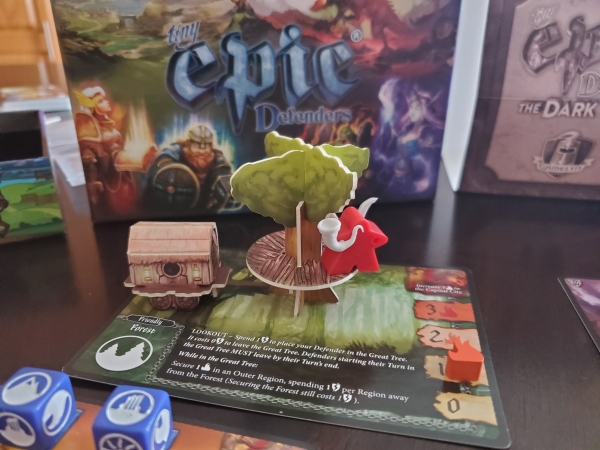
Where are the flaws in the armor? Well, it has to be said that, if playing the base game, the initial turns can be a bit dry while you're warming up to the tension created by mounting Threat. When the Turn deck is that small, it can become kind of predictable, depending on how many players are involved. What keeps the game fresh is, as noted, the great variety presented by regions, heroes, and Dire Enemies, the identity of whom you won't know until they emerge (to say nothing of the hidden Epic Foe.) It probably could be argued that balance in the game comes from the limits of the system. With only four actions to take and one of them not even usable until the Epic Foe (or the Generals, if using the campaign) emerges, repetition might be too much for some players. Again, I'd suggest that the variety of abilities on the heroes and the challenges presented by the varying enemies will keep games from seeming too similar. The one down note about the Dark War is that the skills often seem... underwhelming. There are some real highlights, like Stealth, Dodge, and Hunter, but it hasn't been unusual for us to get through a campaign having largely used only 1 or 2 of our skills and ignored the rest. But, overall, I'd have to say that I'm still surprised by how much I like the game, given its co-op nature. As always, the depth of game play remains impressive.
Thanks for coming to my TED talk. Next time, we go Robotech...
 Games
Games How to resolve AdBlock issue?
How to resolve AdBlock issue? 